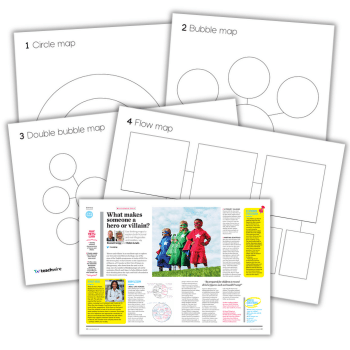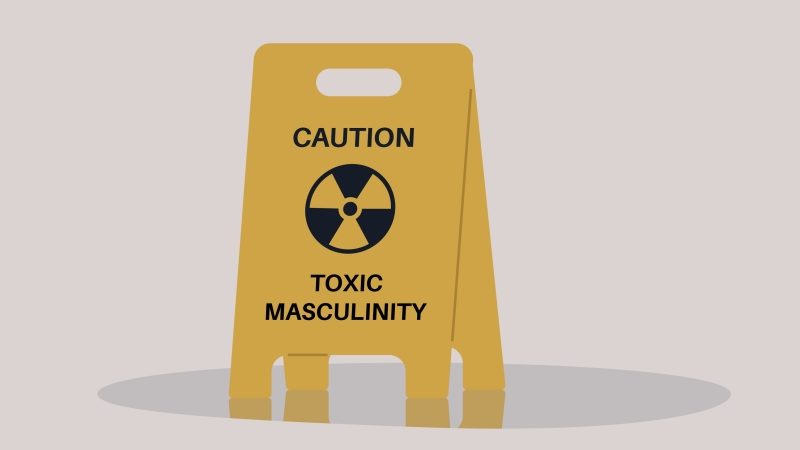What makes school leaders bad at giving feedback?

Formal discussions of colleagues’ strengths and areas for improvement aren’t always approached by leaders in the most effective way, says Adam Robbins…

- by Adam Robbins
- Lead practitioner for whole-school CPD, editor of CogSciSci and author Visit website

There’s an oft- quoted saying in the teaching profession, ‘Feedback is a gift’ – suggesting that to the enlightened professional, all feedback is helpful. The saying ‘Feedback is a kick in the spiritual goolies’ is quoted far less, but holds just as true.
Why is feedback such a difficult thing to get right? I know that in my decade- plus of school leadership I’ve sometimes delivered feedback badly, and also received terrible feedback myself. It’s worth acknowledging that there are two reasons as to why feedback can often go wrong – the content of the feedback, and the way it’s delivered.
Content concerns
In their book, Thanks for the Feedback, authors Sheila Heen and Douglas Stone identify three key types of feedback: appreciation, coaching and evaluation. Appreciation simply identifies what’s going well. Coaching aims to find areas of improvement, while evaluation tries to holistically judge a person’s performance against expectations.
Coaching would appear to be the sweet spot where most teaching feedback should sit, but giving coaching feedback requires a degree of evaluation – a process that actually risks making the person less receptive to the feedback you’re trying to give them, of which more later.
The first issue leaders often run into when delivering feedback is ‘feedback mismatch’. This is when the leader and teacher go into the conversation with different expectations of what the feedback will entail. The leader wants to give coaching, but the teacher can only really handle appreciation right now – maybe they’ve just had a full day of challenging classes, or are under other external pressures.
Feedback mismatch will lead to the coaching being rejected, ignored, or causing offence. Leaders therefore need to find a way round this. Now, I’m not necessarily suggesting that you begin all such conversations with a stilted acknowledgement of your intentions. Opening with “I’d like to have a feedback conversation that involves coaching, by which I mean we’ll discuss your strengths and weaknesses, and I’ll suggest a target,” isn’t ideal. It’ll just make you sound weird.
Instead, I’d recommend starting the conversation by simply asking how their day has been and listening to what they say. If it’s been hectic, perhaps respond with something like “It seems you’ve had a busy day – is now still a good time for your feedback, or should we meet tomorrow?” This allows them to be in control a little more, and approach the conversation on their own terms.
Bad feedback delivery
Schools are busy places and school leaders are busy people, with to-do lists often measured in arm lengths. This means that leaders will frequently be under a huge amount of pressure to get things done as efficiently as possible, thus reducing feedback to just one more thing to tick off on their lists.
The effect of cramming feedback into an already busy schedule can be to deprive it of the time needed for it to be carried out effectively. What we can end up with is a large volume of ‘drive-by feedback’, whereby people pop their heads round the door at the end of the day and say, ‘Got a minute for some feedback?’ or stop you in the corridor to say ‘While you’re here, can I feed back on that lesson I just saw…?’
Drive-by feedback isn’t always bad. It’s great for appreciation – a simple ‘Loved your lesson yesterday!’ or ‘Thanks for making that lesson resource, it was really effective!’ are perfect examples of good drive-by feedback. Coaching and evaluation are both terrible in this format, being far better suited to more formal, face-to-face meetings.
When structuring feedback, our prior training often provides us with feedback models we can use. I personally see feedback conversations as similar to sandwiches or tennis matches, in that they’re not helped by having a rigid structure. If people spot an underlying structure behind the conversation they can become cynical, assuming that any positives are only there because they must be, suggesting tokenism.
Try, then, to keep a general structure in mind, but don’t be afraid to be flexible. With a lesson observation you could choose to give the feedback chronologically as you talk through the lesson, but it’s important that this takes the form of a dialogue, with you asking clarifying questions about the decisions made that can help sharpen your insights.
Teachers are reflective practitioners, and if they can pre-empt some of the areas for improvement, you’ll become more closely aligned and less likely to activate any triggers (see below).
Generic versus specific
Leaders often seem to favour generic feedback over the specific, but this is a huge mistake. Generic praise, like ‘Good pace,’ will be received less well than more detailed praise, such as “I liked the way the use of mini whiteboards allowed the students to quickly demonstrate their understanding – this really helped the pace of the lesson.”
Generic areas for improvement are even worse. These need to be small, ideally simple things that can be practised and integrated into teachers’ lessons. If there are substantial issues at play, then we’ll need to initially hone in on the most important things now, and give only the feedback relevant to those.
Generic comments can also be interpreted as betraying a lack of expertise. Anyone can say ‘Increase the pace,’ but not everyone can explain how to increase the pace. Being able to demonstrate that expertise will increase teachers’ trust in your judgements and willingness to act on your advice.
Curiosity can be a great way of framing feedback actions, especially with experienced staff. Asking them questions like, ‘Have you ever tried using a visualiser to build a model answer in real time?’ and then getting them to commit to trying it within a few days is a great way of getting them on side and preventing that identity trigger from being activated.
Priorities, priorities
It’s true that leaders often give bad feedback, but that’s because giving good feedback is difficult. It takes time, skill and a high degree of sensitivity to your recipients’ needs.
Leaders are under huge pressures, so the time available can cause things to be rushed, but this is ultimately short-sighted. Poor feedback won’t help teachers improve. If anything, it just helps create new jobs later down the line, when the same issues – now potentially more advanced – need to be addressed again.
It’s much more efficient to prioritise finding time to give effective feedback and get the job done first time. By giving effective feedback in a way that can create and sustain long-term change, we can free up our time and transform the quality of teaching in our teams.
Triggers to avoid
Sheen and Stone identify three types of trigger that can block a person’s ability to accept feedback:
Relationship triggers: The feedback might be spot on, but the teacher doesn’t respect your opinion and therefore won’t listen
Truth triggers: The feedback rings false from their point of view
Identity triggers: The feedback makes them question a fundamental part of their core persona, or even who they really are
All three triggers are common in teaching. School politics, policies and personalities make them an inevitable and unavoidable aspect of every feedback conversation that leaders need to deal with. It’s therefore in a leader’s best interests to be mindful of them when issuing feedback, pre-empting those triggers they’re most likely to encounter and disarming them by thoughtfully and effectively structuring their feedback conversations.
Adam Robbins is a head of department at a large comprehensive school, where he oversees and supports teacher development; he is also the managing editor at CogSciSci – a grassroots organisation which aims to bring findings from the field of cognitive science into classrooms.
Adam’s new book, Middle Leadership Mastery, is available now (£16.99, Crown House Publishing); for more information, visit adam-robbins.com or follow @MrARobbins/







